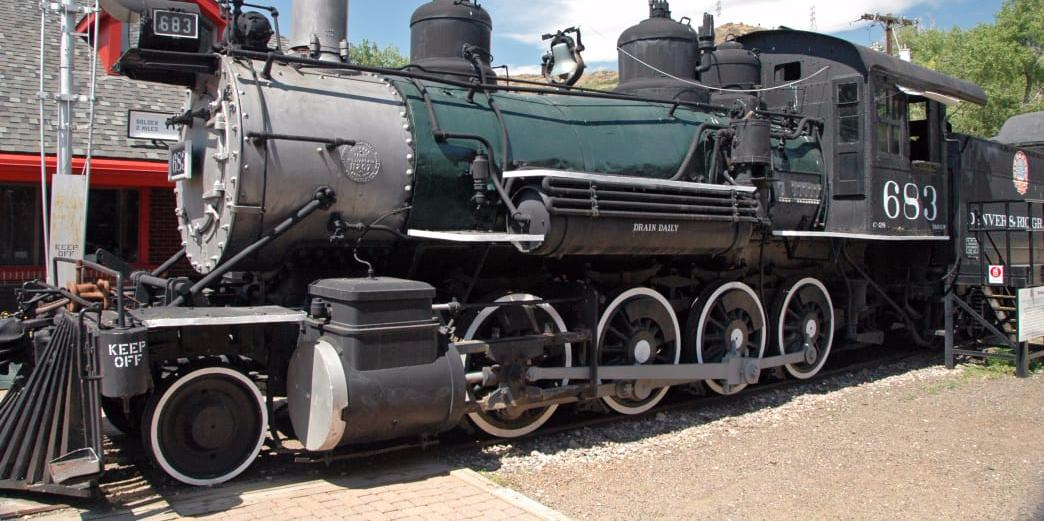As you rumble through the Colorado mountains aboard the Rio Grande Scenic Railroad, it’s easy to imagine you’re a settler rolling into the west to start a new life.
When you hop off the train in Alamosa, you still feel that deep sense of yesteryear as you stroll among Mission-style buildings and adobe structures. With its long, rich history and many cultural influences, Alamosa is an intriguing destination for travelers who love to get a taste of the past. Of course, Alamosa’s fascinating history extends beyond the days of the Old West.
Early Inhabitants
The first humans to depend on the rich natural resources of the San Luis Valley were indigenous tribes. The Clovis and Folsom peoples—two prehistoric Paleo-Indian cultures known for their stone tools—were hunters and gatherers in the region, close to 11,000 years ago.
The next settlers were the Ute people, who are recognized as the longest-standing residents of the geographic region that is now Colorado. By 1400 A.D., other indigenous tribes inhabited the area, too: Apache and Navajo from the north, Tiwa and Tewa people from the south, and Comanche, Kiowa, Cheyenne, and Arapaho from the eastern plains.
By the 1500s, Spanish conquistadors began to explore the land, for which there was ongoing tension with local tribes such as the Comanche. Mexico was liberated from Spain in 1821, and the Mexican Republic offered land grants in the region in an effort to catalyze permanent settlement.
That 500,000-acre Tierra Amarilla Land Grant was broken into parcels, including the Banded Peak ranch—now home to Gramps’ Oil Field, which has produced more than five million barrels of oil since 1935—and the Conejos Guadalupe Land Grant, which encompasses segments of three counties: Conejos, Rio Grande, and Saguache. Fifty families from New Mexico created Guadalupe, the inaugural permanent settlement, which led to Colorado’s first-ever flour mill, next to the Conejos River.
Settlers Arrive
A steady flow of permanent settlers arrived in the 1850s, after the area became an official territory of the U.S. More west-bound settlers flowed into the area during the 1870 mining push, when gold and silver were discovered west of Alamosa. Del Norte, established in 1872, served as a location for resupply for the San Juan miners, and additional mining settlements speckled the Sangre de Cristo Mountains, including sites at Bonanza and Creede.
In 1876, Colorado was founded as the 38th state in the Union. One year later, mining opportunities in the San Juan Mountains sparked construction of the Denver and Rio Grande Railway in San Luis Valley.
A web of railway arms were built to reach Antonito, Durango, Silverton, Monte Vista, and Del Norte. Another connection was created to Espanola, New Mexico, to link up traffic and trade in Santa Fe. The expansion of the railway supported the mining era. As an example, the narrow-gauge line that extended up and over Poncha Pass helped to carry gold and iron.
Simultaneous to the boom of the locomotive industry was the growth of area’s agricultural community. In the early 1880s, Mormon settlers from the southern U.S. and Utah established Manassa, Sanford, and Richfield. Adjacent to the Conejos River, the farmers grew barley, oats, alfalfa, and peas. In the 20th century, two independent standard-gauge railroad lines were created to help haul agricultural produce: the 30-mile San Luis Valley Southern Railway and the San Luis Central Railroad. Today, the San Luis Valley remains rooted in agriculture and the stock-raising of sheep and cattle.
Living History Now: Where to Go
Experiencing Alamosa’s history is easy: It’s alive on every corner.
Stroll through downtown Alamosa on a self-led walking tour of the charming architecture, which features late Victorian, commercial brick, Mission Revival, and Art Deco styles. On your walk, be sure to include Historic Engine 169, a Denver and Rio Grande Railroad steam locomotive that’s listed on both the National Registry and Colorado State Register of Historic Properties. Built in 1883, the coal-fired, 10-wheeler stands at Cole Park.
Swing by Fort Garland Museum & Cultural Center to see the town’s original adobe buildings, where frontiersman Kit Carson and more than 100 servicemen stood to protect the San Luis Valley settlers. Then visit San Luis Valley Museum, which is home to a variety of artifacts, from the 1860s wardrobe of frontiersman Tom Tobin to railroad memorabilia and the arrowheads of indigenous communities.
For a unique Old-West experience, book your ticket on the Rio Grande Scenic Railroad, which follows a narrow-gauge track and includes train cars dating to the early 1900s. Departing from Alamosa, you can take a full-day excursion to visit historic Fort Garland—built in the mid-19th century to protect San Luis Valley settlers— and then wind through the mountains to end at either La Veta or Fir Summit, which sits at nearly 9,400 feet of elevation atop the La Veta Pass.
Even before it was an important rail center, Alamosa was known as a crossroads. Over the centuries, ancient cultures and indigenous tribes occupied the land, and Spanish explorers tried to gain a foothold. In the 1800s, the area saw an influx of newcomers from all over the country pursuing their dreams in the west. Fortunately, remnants of this fascinating history remain. If you want to get a real sense of western culture, past and present, make your way to the San Luis Valley and the captivating town of Alamosa.
Written by Morgan Tilton for RootsRated Media in partnership with Alamosa CVB.







